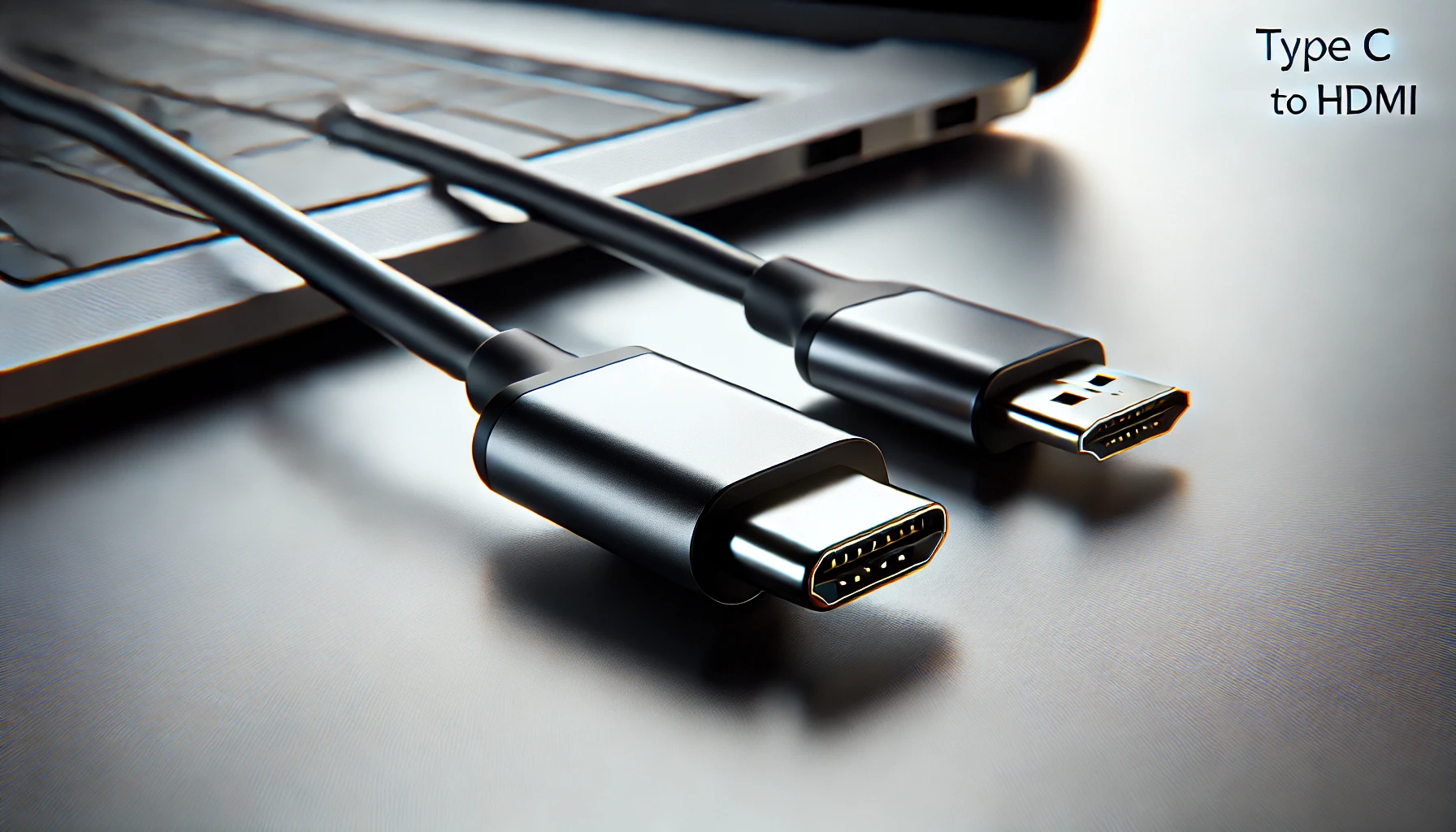In today’s interconnected world, seamless connectivity between devices has become more than a convenience—it’s a necessity. As technology evolves, USB Type-C to HDMI cables have emerged as essential tools for bridging the gap between newer and legacy devices. These cables provide the ability to connect laptops, tablets, and smartphones with USB-C ports to monitors, projectors, and TVs with HDMI inputs. Whether you’re a professional needing to deliver presentations, a gamer seeking a larger screen, or a movie enthusiast, a Type-C to HDMI cable offers unparalleled versatility and simplicity.
Gone are the days of carrying multiple adapters and dongles. With its plug-and-play functionality, a Type-C to HDMI cable ensures that high-definition video and audio are transmitted seamlessly without requiring any additional drivers. This introduction aims to demystify the Type-C to HDMI cable, offering a deep dive into its uses, features, and advantages to help you decide if it fits your needs.
Type-C to HDMI Cable: Detailed Description
Understanding the Basics
A USB Type-C to HDMI cable is a specialized connector that enables the transmission of video and audio signals from a device with a USB-C port to a display with an HDMI port. USB-C, a modern standard for data transfer and charging, has gained widespread adoption due to its compact design, reversible connector, and high-speed performance. HDMI, or high-definition multimedia interface, is a staple for transferring uncompressed video and audio, making it the go-to standard for displays.
When these two technologies converge, the result is a cable that simplifies connectivity. Most Type-C to HDMI cables support 4K resolution at 60Hz, ensuring crystal-clear images and smooth video playback. Advanced models may even support features like HDR (High Dynamic Range) for enhanced color and contrast, making them suitable for both professional and entertainment purposes.
Key Features
- High-Quality Video and Audio Transmission
The cable delivers superior-quality video up to 4K resolution, maintaining clarity and vivid colors. Audio signals are also transmitted without lag, making it ideal for presentations and media playback. - Plug-and-Play Functionality
There’s no need for additional drivers or software. Simply connect the cable, and it works instantly. - Wide Compatibility
Designed to work with laptops, tablets, and smartphones that support DisplayPort Alternate Mode via USB-C, the cable is compatible with devices from leading brands like Apple, Dell, Samsung, and Huawei. - Durable Build
High-quality materials like aluminum housing, gold-plated connectors, and braided cables ensure long-term reliability and resistance to wear and tear. - Portability
Lightweight and compact, these cables are easy to carry, making them perfect for on-the-go professionals or students.
Applications of Type-C to HDMI Cables
- Professional Use: Perfect for connecting laptops to projectors or monitors during presentations or conferences.
- Home Entertainment: Enhance your movie nights by connecting your device to a larger display.
- Gaming: Gamers can enjoy immersive experiences by extending their gameplay to a bigger screen.
- Creative Work: Graphic designers and video editors can use external monitors for better accuracy.
Specifications
Here’s a quick overview of what a high-quality Type-C to HDMI cable offers:
- Connector Type: USB Type-C to HDMI
- Resolution Support: Up to 4K at 60Hz
- Compatibility: USB-C devices with DisplayPort Alternate Mode (e.g., laptops, tablets, smartphones)
- Cable Length: Typically 3 to 6 feet (varies by model)
- Material: Nylon braided or PVC with aluminum housing
- Features: Plug-and-play, HDR support, audio and video transmission
Reasons to Buy
- Convenience: No need for multiple adapters; a single cable does the job.
- High Performance: Excellent video and audio quality for work and entertainment.
- Durability: Built to last with robust materials.
- Cost-effective: Eliminates the need for expensive docking stations or hubs.
- Versatility: Compatible with a wide range of devices and displays.
Reasons to Avoid
- Compatibility Issues: Not all USB-C devices support DisplayPort Alternate Mode.
- Cable Length Limitation: Longer cables may compromise performance.
- Price Variation: High-quality cables with advanced features can be expensive.
- No Power Delivery: It doesn’t charge your device during use.
FAQs About Type-C to HDMI Cables
1. How do I know if my device supports a Type-C to HDMI cable?
Check your device’s specifications to confirm if it supports DisplayPort Alternate Mode through the USB-C port.
2. Can I use this cable for gaming?
Yes, most Type-C to HDMI cables support high resolutions and refresh rates, making them suitable for gaming.
3. Is there a difference between active and passive Type-C HDMI cables?
Active cables include a built-in chip to convert signals, while passive cables rely on the device’s capabilities. Active cables are more versatile for compatibility.
4. Does the cable transmit audio as well as video?
Yes, Type-C to HDMI cables transmit both audio and video signals.
5. Can I use a Type-C to HDMI cable with my phone?
If your phone supports DisplayPort Alternate Mode, you can use it to connect to an HDMI display.
Conclusion
A Type-C to HDMI cable is an indispensable tool for modern connectivity. Whether you’re a student, professional, gamer, or movie enthusiast, this versatile cable simplifies your digital lifestyle by offering seamless connections. By understanding its features, applications, and limitations, you can make an informed purchase that enhances your multimedia and work experiences.

